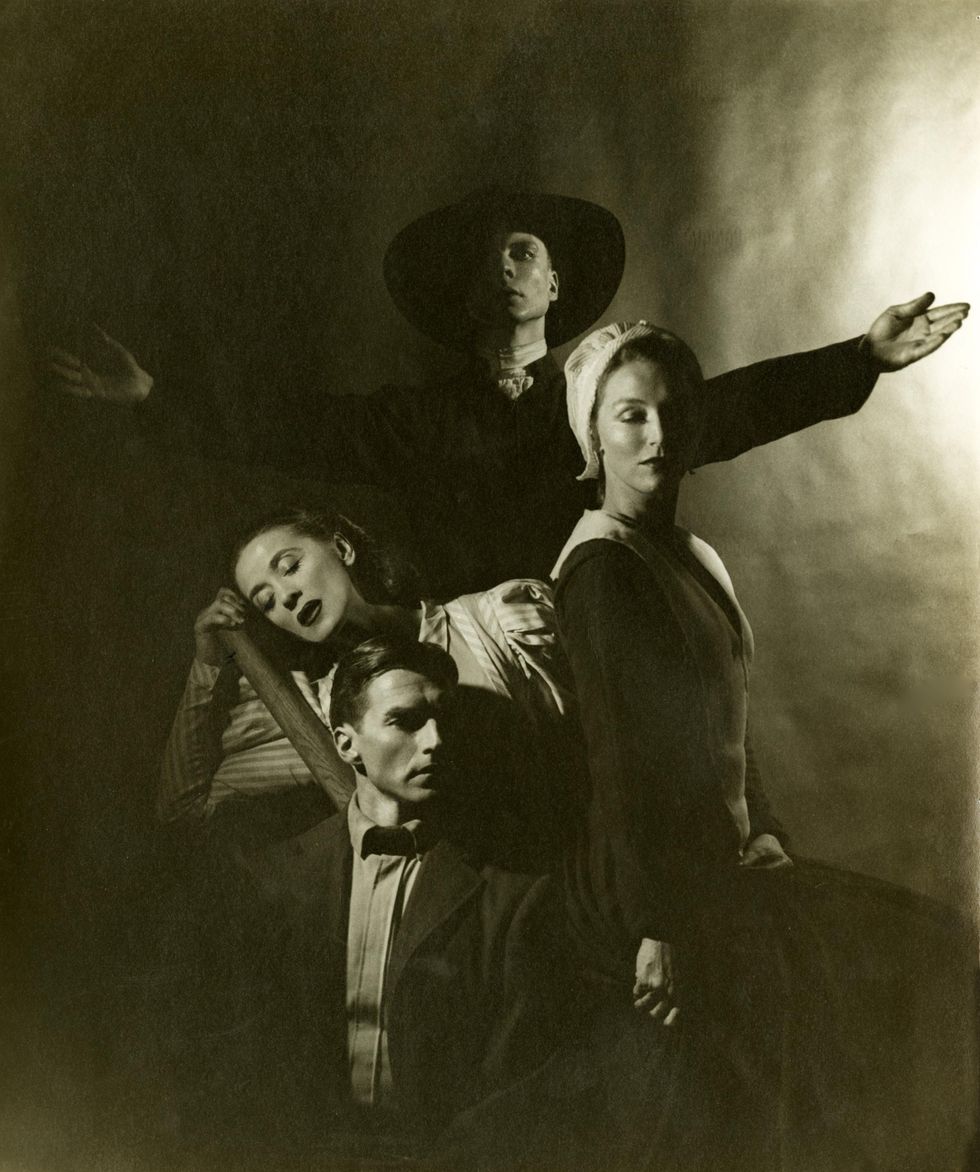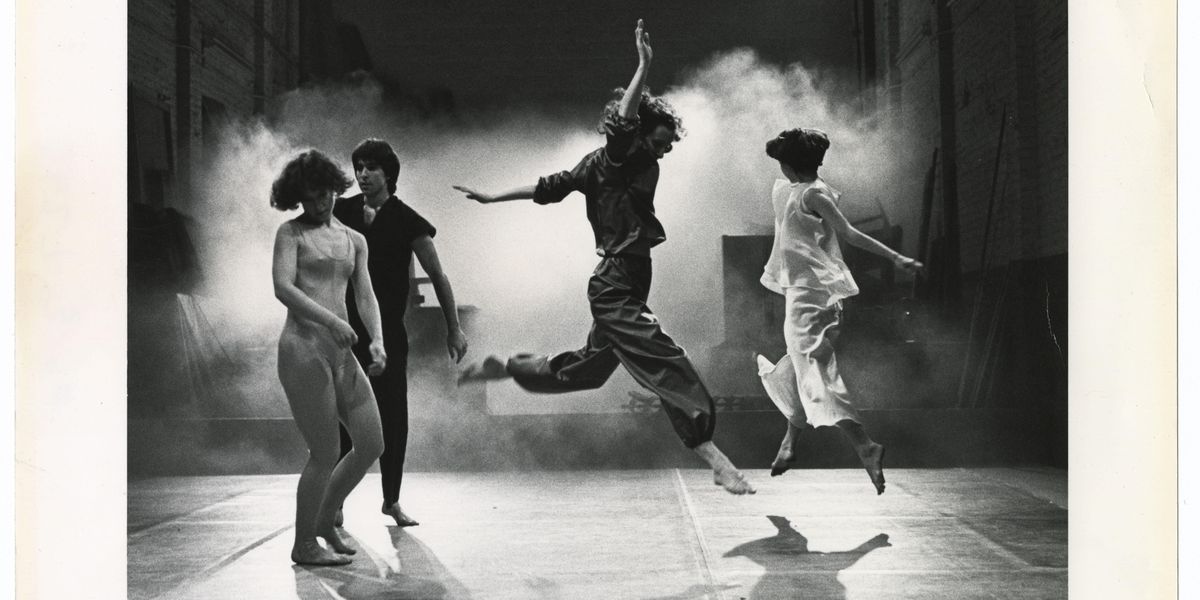How Both Martha Graham and Trisha Brown's Archives Landed at the Jerome Robbins Dance Division
The world’s largest dance archive just keeps growing. Over the summer, the New York Public Library for the Performing Arts’ Jerome Robbins Dance Division began welcoming two new collections to its illustrious archive. The legacies of Martha Graham and Trisha Brown will be safely housed at NYPL’s Lincoln Center campus, featuring rarely seen treasure troves of papers, photographs and moving images.
The Martha Graham Dance Company Collection

Martha Graham, Erick Hawkins, Merce Cunningham and May O’Donnell in Appalachian Spring
Cris Alexander, Courtesy Jerome Robbins Dance Division
NYPL’s acquisition of the Martha Graham archives was announced last May, on the 126th anniversary of the celebrated choreographer’s birth. The Martha Graham Dance Company has been involved with the NYPL since the launch of its video documentation program in the 1960s, and the company’s leadership spent nearly 15 years working on a plan to ensure the longevity of its collection. “Martha was a New Yorker for 70 years,” says artistic director Janet Eilber. The Dance Division “is so accessible and curating things so creatively that people will be able to access the materials in all different ways.”
The collection features over 400 audio and moving-image items, covering Graham’s childhood, performance career, choreographic oeuvre and company. Highlights include tintype family photographs, Isamu Noguchi’s set drawings for Seraphic Dialogue and forgotten correspondence between Graham and composer William Schuman, regarding his Night Journey score and the ballet’s character descriptions.
The Dance Division’s holdings already included materials from Isadora Duncan, Loïe Fuller, Charles Weidman, Ruth St. Denis and Ted Shawn. “Graham was the final missing piece in building out our archive of the legacy of early American modern dance,” says Linda Murray, curator of the Jerome Robbins Dance Division. Though public programming is delayed due to COVID-19, the collection is in the process of being catalogued. The library hopes the papers will be fully available to researchers by spring 2022.
The Trisha Brown Archives

Brown’s Foray Forêt
Elian Bachini, Courtesy Jerome Robbins Dance Division
Though postmodern matriarch Trisha Brown passed away in 2017, her company had been working since 2015 to find a home for her archive. “While Trisha was interested in what could be gleaned from the study of her past, she was equally concerned with how her archives could be activated to create something new,” says Trisha Brown Dance Company executive director Barbara Dufty. Brown’s archive will join the collections of Judson Dance Theater peers like Deborah Hay and David Gordon, helping to flesh out researchers’ understanding of New York City’s downtown dance scene.
Brown’s collection includes correspondence, musical scores, dance notation, photographs and more, but its centerpiece is the Building Tapes. Starting in 1990, Brown filmed the entirety of each of her rehearsals, a practice uncommon at the time. She and her choreographic assistant, Carolyn Lucas, now the company’s associate artistic director, would then write down everything that had happened. This footage, spanning from 1994 to 2011, and its corresponding notebooks offer rich material for dancemakers and scholars alike. “It’s going to illuminate her body of work in ways we can’t imagine,” says Murray.
A lesser-known highlight of the archive is a long-forgotten video of Brown, dressed in a tutu, making her way across a tightrope. “The day I saw it I was absolutely charmed,” says Murray. “And that’s what I love about archives.”
Plus: The Bill T. Jones/Arnie Zane Company Archive Goes Online
Acquired in the summer of 2019, The Bill T. Jones/Arnie Zane Company Archive is another of the Dance Division’s newer collections, and the papers are now available for remote access upon request. “I feel like Bill has always been an artist of our time,” says Murray. “So much of his body of work is about trauma, and race is also central to what Bill makes. I’m very glad the papers are available, even while our reading room is closed.”





